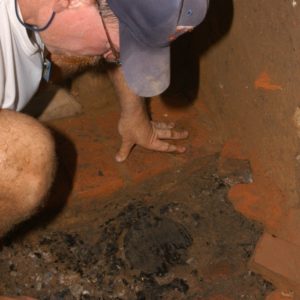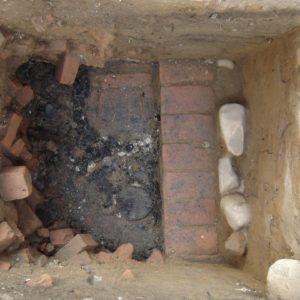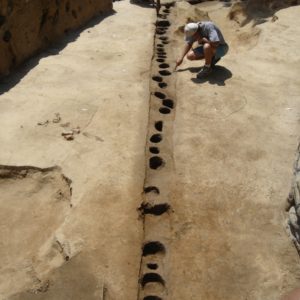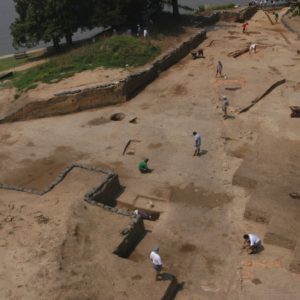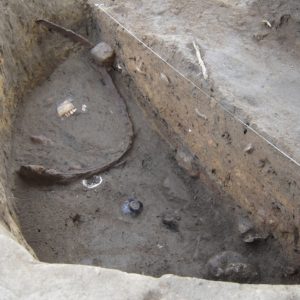A section of the James Fort site near the western palisade wall has been backfilled. By filling in excavated sections of the site with dirt, the archaeologists preserve James Fort from erosion so that future researchers, perhaps equipped with better technology, can conduct their own investigations there. The archaeologists choose where to dig not because they want to excavate the whole fort, but because they have specific questions they need answered. Once they have gathered the evidence they need and have carefully recorded their discoveries, the site is filled back in. In this way they meet their goals of both learning about James Fort and preserving it.
The well found inside the fort’s walls and described in last month’s update is in fact much younger than the fort period context. By analyzing the types of artifacts found in the well, the archaeologists believe the well to originate from the third quarter of the 17th century. The colonists used this and other wells in the area as trash pits once they were no longer used as a source for water.
A Native building which predates the arrival of the English settlers has been found near the center of the fort. Seven postholes forming an ovoid shape suggest the presence of the building and give further evidence that native peoples had a history of settlement on Jamestown Island.
The 17th-century cellar that archaeologists began to excavate last month has yielded some interesting finds. The floor of the cellar was completely lined with brick and shows extensive evidence of a fire. Ash covers much of the floor and the bottom of a charred wooden bucket sits where it burned over 300 years ago.
The team is currently digging close to the river, excavating an area very near the seawall toward where the southern palisade wall would have been. They are searching for more buildings there in order to piece together the layout of the southern area of the fort.
related images
- Brick-lined cellar with ashes and bottom of burned bucket
- Another view of the brick-lined cellar
- The western palisade line
- Site overview, the cobblestone foundation buildings are visible on the right
- Part of the western palisade area already backfilled
- Well dating to the third quarter of the 17th century



